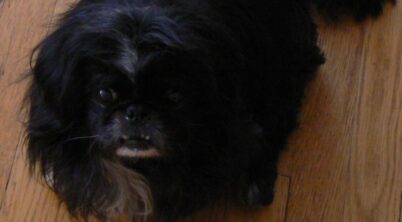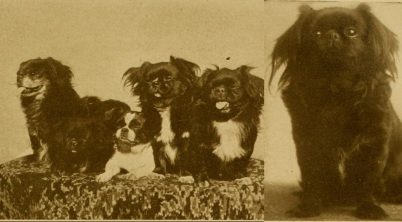The Pekingese, a small and ancient breed of toy dogs, has long been admired for its distinctive appearance and regal demeanor. Hailing from China, these compact canines often display an underbite, which has become one of their most iconic features. While to some, this may appear as a mere quirk, the Pekingese underbite is actually an essential part of the breed’s standard and has various implications for their overall health.
Despite its small size and unique features, the Pekingese possesses a strong and sturdy frame that has been carefully cultivated over generations. The underbite, also known as a prognathism or reverse scissor bite, is not an unintentional occurrence but rather a carefully selected trait by breeders. As such, it is crucial for potential owners and enthusiasts to understand the significance of this feature and its impact on the well-being of these charming dogs.
Accordingly, this article delves into the origin and purpose of the Pekingese underbite, shedding light on the breed’s history and the implications of this characteristic on their dental and overall health. By understanding the underbite’s role in the Pekingese breed, owners can better care for their canine companions and help them lead happy, healthy lives.
Table of Contents
Origin and History
The Pekingese breed, also known as the “lion dog,” originated in ancient China and has a rich history dating back over 2,000 years. These small, distinctive dogs gained popularity in the Imperial court, where they were revered as sacred animals by Chinese emperors.
During the Tang Dynasty (618-907 AD), the Pekingese is said to have been a favorite amongst royals. They were highly prized, not only for their unique appearance but also for their loyal and affectionate nature. Pekingese dogs were so valued that commoners were forbidden from owning them, and only members of the Imperial family could keep these sacred pets.
One of the most captivating features of the Pekingese breed is its underbite. This trait, along with their large, prominent eyes, gives them a distinctive facial expression. The underbite is thought to have developed as a result of selective breeding over the centuries.
The Pekingese breed eventually reached Europe in the 19th century. In 1860, during the Second Opium War, British and French troops looted the Imperial Palace in Beijing. Among the treasures seized were five Pekingese dogs, which were brought back to England. Queen Victoria received one of these dogs as a gift, and the breed soon gained popularity amongst the British upper class.
In the early 20th century, the Pekingese was crossed with the King Charles Spaniel, another breed favored by royalty. This crossbreeding resulted in not only a wider variety of coat colors but also smaller, more refined features.
Today, the Pekingese is adored by dog enthusiasts worldwide for its unique appearance and strong connection to Chinese history. While their underbite may pose some health challenges, responsible breeding practices have ensured that the Pekingese remains a cherished and enduring breed.
Physical Features
The Pekingese is a small, compact dog breed, known for its distinctive facial features. One such feature is its underbite, where the lower jaw protrudes further than the upper jaw. This characteristic, coupled with their flat, wrinkled faces, gives the breed its unique appearance.
Pekingese dogs come in various colors, encompassing a wide range of shades including red, white, black, cream, sable, black and tan, fawn, and gray. Their coat is long, straight, and relatively coarse, with a thick, soft undercoat that provides insulation against cold weather.
In terms of size, the Pekingese typically stands between 6 to 9 inches in height and weighs between 7 to 14 pounds. They have stocky, muscular bodies and short, sturdy legs, making them a relatively robust breed despite their small stature.
The Pekingese’s eyes are round, large, and dark, adding to its charming and somewhat inquisitive expression. Furthermore, their ears are heart-shaped and set at the upper edge of their head, lying flat against their skull and covered in long, flowing hair.
Pekingese Underbite
Causes of Underbite
An underbite, also known as malocclusion, is a condition where the lower row of teeth protrudes beyond the upper row of teeth. In Pekingese dogs, the most common cause of an underbite is genetics. The breed is predisposed to develop this condition due to its facial structure and hereditary factors. However, there are other factors that may contribute to the development of canine malocclusion, such as dental malocclusion and skeletal problems.
Dental malocclusion can occur due to uneven development of the teeth or misalignment resulting from trauma to the mouth. Skeletal problems, on the other hand, can arise during gestation or early growth stages, causing the lower jaw to be more prominent than the upper jaw.
Managing an Underbite
It’s essential to monitor a Pekingese dog’s underbite for signs of discomfort or pressure on the teeth and gums. Symptoms may include behavioral changes or reluctance to eat. To alleviate discomfort, there are a few options:
- Regular dental checkups: Visiting a veterinarian regularly ensures that any dental issues related to the underbite are promptly addressed.
- Dental cleanings: These help to remove plaque buildup and prevent periodontal disease, which can aggravate an existing underbite.
- Orthodontic intervention: In severe cases, a veterinarian might suggest orthodontic treatment such as braces to correct the malocclusion.
Potential Complications
An unmanaged underbite can lead to complications for a Pekingese dog. Some possible issues include:
- Wear and tear on the teeth: Due to the misalignment, the teeth might suffer from excessive wear, leading to dental issues and pain.
- Periodontal disease: The malocclusion can create pockets or spaces for food to become trapped, leading to plaque buildup, gum inflammation, and infection.
- Difficulty eating: Some dogs with an underbite may experience difficulty picking up food or chewing, potentially causing weight loss and malnutrition.
By monitoring and managing a Pekingese dog’s underbite, owners can help prevent or lessen these complications and ensure their dog’s overall health and well-being.
Pekingese Mixes and Breed Comparisons
Pekingese dogs are known for their distinctive underbite and unique appearance. When bred with other breeds, they create interesting and adorable mixes. Some popular Pekingese mixes include:
- Pekingese Shih Tzu mix (Shinese): A combination of the Pekingese and Shih Tzu breeds, this mix is small, affectionate, and a great companion.
- Pekingese Pug mix (Puginese): A cross between a Pekingese and a Pug, this mix often inherits the Pug’s wrinkly face and expressive eyes, along with the Pekingese’s characteristic underbite.
- Pekingese Boston Terrier mix (Bostinese): A mix of the Pekingese and Boston Terrier breeds, this mix shares the short-snouted, affectionate nature of both parent breeds.
Comparing the Pekingese to similar small breeds, some notable differences and similarities can be found:
| Dog Breed | Common Traits | Differences |
|---|---|---|
| English Bulldog | Stubborn, Affectionate, Good with Kids | Larger, More Wrinkled Face |
| French Bulldog | Loving, Playful, Compact | Less Hair, Friendly |
| Chihuahua | Small, Alert, Attentive | Shorter Coat, More Energetic |
| Lhasa Apso | Friendly, Independent, Loyal | Longer Coat, Less Stubborn |
| Boxer | Protective, Intelligent, Confident | Larger Size, Shorter Coat |
Not all small dog breeds share the same underbite characteristic as the Pekingese. Breeds like the Maltese, Pomeranian, and Cavalier King Charles Spaniel have distinct appearances but do not typically have an underbite. In contrast, breeds such as the Labrador Retriever, though not a small breed, may occasionally have an underbite.
In summary, the Pekingese has unique features that set it apart from other dog breeds. When mixed with other breeds, it creates adorable and interesting mixes, each with their own traits and appearances. Comparing the Pekingese to other breeds reveals some similarities and differences, emphasizing their distinctive look and personality.
Conclusion
The Pekingese underbite is a unique characteristic of this breed, stemming from their brachycephalic facial structure. Breeders and pet owners should be vigilant about their Pekingese’s dental health, as underbites can sometimes lead to complications like misaligned teeth, difficulty eating, or gum and tooth issues.
Regular dental check-ups with a veterinarian are essential for maintaining a Pekingese’s oral health, especially for those with underbites. Additionally, good dental hygiene practices such as brushing their teeth regularly, providing dental treats, and using dental chews can also contribute to better oral health.
While it is important to be cautious about potential issues, it’s also vital to remember that the Pekingese underbite is a part of what makes this breed distinctive and charming. With proper care and attention, Pekingese owners can ensure their pets live a happy, healthy life, underbite and all.








